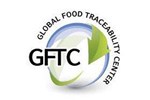ARTICLES BY MELISSA LIND
-
The Nation’s Largest Food Safety Inspection Database Is Up And Running5/18/2015
Food safety inspection data has traditionally been difficult to aggregate as each regulating agency has compiled its own data in individual databases. While it is fairly simple to find publicly available inspection data on the USDA and FDA websites, local and state agency information hasn’t been so easy to find… until now.
-
Is The GRAS System Conflict Free?5/11/2015
In order for an additive to become generally recognized as safe, it may not have to undergo chemical testing. However, once on the GRAS list, safety never has to be addressed. Critics say that this system is rife with bias.
-
Why Effective Traceability Systems Utilize Automated Data Collection4/28/2015
Whether it is mislabeling an ingredient known to be an allergen or a contamination event, immediate response is needed to maintain safety in the food supply chain, but many companies may be using out-of-date tracking systems. With any possibility of a food-safety event resulting in dangerous allergic reactions or illness, recall efforts must be put forth post haste, but antiquated systems make timely response impossible.
-
Reducing The Risk Of Metal-Fragment Contamination4/15/2015
Metal contaminants come in all shapes and sizes, but not all are equally detectable. No matter the foreign-body detection technology employed by your facility, irregularly-shaped metal is the culprit of most food-product recalls.
-
Are Your Blend Sampling Practices Effective?3/31/2015
If you are using powder blends as part of your food manufacturing process, performing routine sampling of the blend to maintain quality assurance is essential. Chosen sampling technique can be the difference between really knowing that blending processes are good and being way off the mark.
-
Raising The Bar To Prevent Undeclared Food Allergens3/13/2015
Undeclared allergens were responsible for nearly half of all food recalls last year. This number represents a dramatic rise from 2009 when allergens were responsible for just over a third of food recalls.
-
Metal-Detection Systems: Still A Safe Bet For Food Manufacturers2/18/2015
The food industry’s technologies for foreign-body detection have made tremendous strides in recent years. While many production lines are considering eliminating metal-detection systems, they remain a strong method of achieving product safety and quality assurance.
-
What Are Current And Future Challenges Of The Food Industry?1/5/2015
A recently released food industry research panel, conducted amongst Canadian executives last June, compares North American food industry responses to those of European counterparts. Across the board, food-industry professionals continue to rank profit, customer satisfaction, and food safety as the industry’s top goals. However, concerns of the environment are gaining traction.
-
Supply-Chain Transparency Can Give Food Makers A Competitive Edge10/15/2014
Today, traceability demands are escalating on food producers. Regulations are becoming increasingly-strict and customers want to know more about the food they are consuming. Ensuring visibility in you company’s supply chain can be seen as a daunting task, but it can also be looked at as an opportunity
-
GFTC Releases Global Food Traceability Best Practices Guidance9/9/2014
The Global Food Traceability Center’s new best practice guidance document provides a framework outlining outstanding traceability methods across six sectors — dairy, meat and poultry, seafood, bakery, produce, and processed foods







